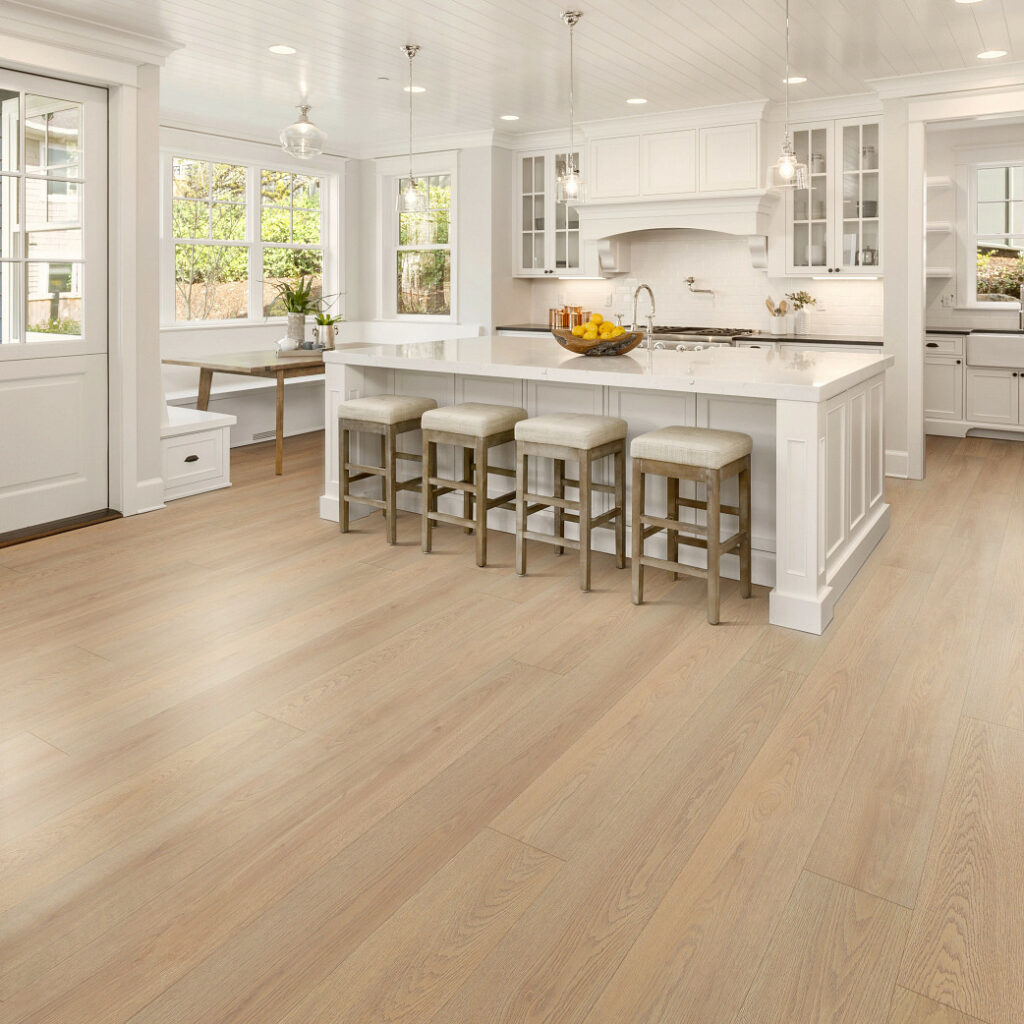Choosing the right flooring for your home is a significant decision that impacts both aesthetics and functionality. With a plethora of options available, it’s essential to weigh the pros and cons of each to make an informed choice. In this blog, we’ll explore the merits of luxury vinyl plank flooring (LVP) and compare it to other popular flooring options, helping you determine which is the best fit for your lifestyle and needs.
1. Luxury Vinyl Plank Flooring (LVP)
Let’s begin with a closer look at luxury vinyl plank flooring:
Pros:
- Realistic Appearance: LVP replicates the look and texture of natural wood, providing a luxurious aesthetic at a fraction of the cost.
- Durability: LVP is known for its resistance to scratches, stains, and moisture. It’s an ideal choice for high-traffic areas and households with children and pets.
- Easy Maintenance: Cleaning LVP is a breeze. Regular sweeping and occasional mopping are all it takes to keep it looking pristine.
- Comfort: Unlike hardwood, LVP has a softer underfoot feel, making it more comfortable for extended periods of standing or walking.
Cons:
- Not Eco-Friendly: LVP is made from synthetic materials, which may not appeal to environmentally conscious homeowners.
- Not as Long-Lasting as Hardwood: While durable, LVP typically doesn’t have the same lifespan as solid hardwood flooring.
2. Hardwood Flooring
Hardwood flooring is a classic choice that has been popular for generations.
Pros:
- Timeless Elegance: Hardwood exudes a timeless beauty and adds a touch of sophistication to any space.
- Durability: High-quality hardwood can last for generations, and it can be refinished to maintain its appearance.
- Increased Home Value: Homes with hardwood flooring often command higher resale values.
Cons:
- Vulnerable to Scratches and Moisture: Hardwood can scratch easily and is susceptible to water damage, making it less suitable for high-moisture areas like bathrooms and basements.
- Regular Maintenance: Hardwood requires regular maintenance, including refinishing, to keep it looking its best.
3. Laminate Flooring
Laminate flooring offers a balance between cost and appearance.
Pros:
- Affordability: Laminate is typically more budget-friendly than hardwood or LVP.
- Resistant to Stains: Laminate is less prone to staining than hardwood.
- Ease of Installation: Laminate often comes in click-and-lock planks, making it a popular choice for DIY installations.
Cons:
- Not as Durable as LVP: Laminate is more susceptible to wear and tear, and it doesn’t handle moisture well.
- Limited Lifespan: Laminate may need replacement sooner than other flooring options.
4. Tile Flooring
Tile flooring is known for its versatility and durability.
Pros:
- Variety of Styles: Tiles come in an extensive range of styles, patterns, and colors, allowing for creative design possibilities.
- Durability: Tile is highly resistant to scratches, stains, and moisture, making it suitable for kitchens and bathrooms.
- Low Maintenance: Tiles are easy to clean and maintain.
Cons:
- Cold Underfoot: Tile can feel cold and hard underfoot, which may not be comfortable for everyone.
- Installation Challenges: Installing tile can be more challenging and time-consuming than other flooring options.
5. Carpet Flooring
Carpet offers comfort and warmth:
Pros:
- Comfort: Carpet provides a soft and comfortable surface underfoot.
- Insulation: It offers better insulation and noise reduction compared to hard flooring options.
- Wide Range of Colors and Textures: Carpets come in a wide variety of colors, textures, and patterns to suit different styles.
Cons:
- Stains and Allergens: Carpets are more prone to stains and can trap allergens, requiring regular cleaning and maintenance.
- Shorter Lifespan: Carpets may need replacement more frequently than hard flooring options.
Choosing the Right Flooring
Selecting the right flooring option depends on your priorities, lifestyle, and budget. Here are some considerations to help you make an informed decision:
- Lifestyle: If you have young children or pets, durability and stain resistance may be top priorities, making LVP or tile a suitable choice.
- Budget: Consider your budget, as different flooring options vary in cost. Keep in mind that long-term durability can impact overall expenses.
- Aesthetic Preferences: Your personal style and design preferences will also play a significant role in your decision. Some people prefer the warmth of hardwood, while others appreciate the convenience of LVP.
- Maintenance: Think about the level of maintenance you’re willing to commit to. Carpets and hardwood require more upkeep, while LVP and tile are relatively low-maintenance.
- Moisture Levels: Consider the moisture levels in your home. For high-moisture areas like bathrooms, tile or LVP may be the best choice.
- Environmental Concerns: If you’re environmentally conscious, hardwood, which is a natural and renewable resource, may be a better fit than synthetic options like LVP.
Conclusion
Choosing the right flooring for your home is a significant decision that should align with your lifestyle, budget, and design preferences. Luxury vinyl plank flooring, hardwood, laminate, tile, and carpet all have their own unique advantages and disadvantages. By carefully evaluating your needs and priorities, you can select the flooring option that suits your home and enhances your living space for years to come.
City and Suburban Floor Company www.cityandsuburbanfloorsanding.com

